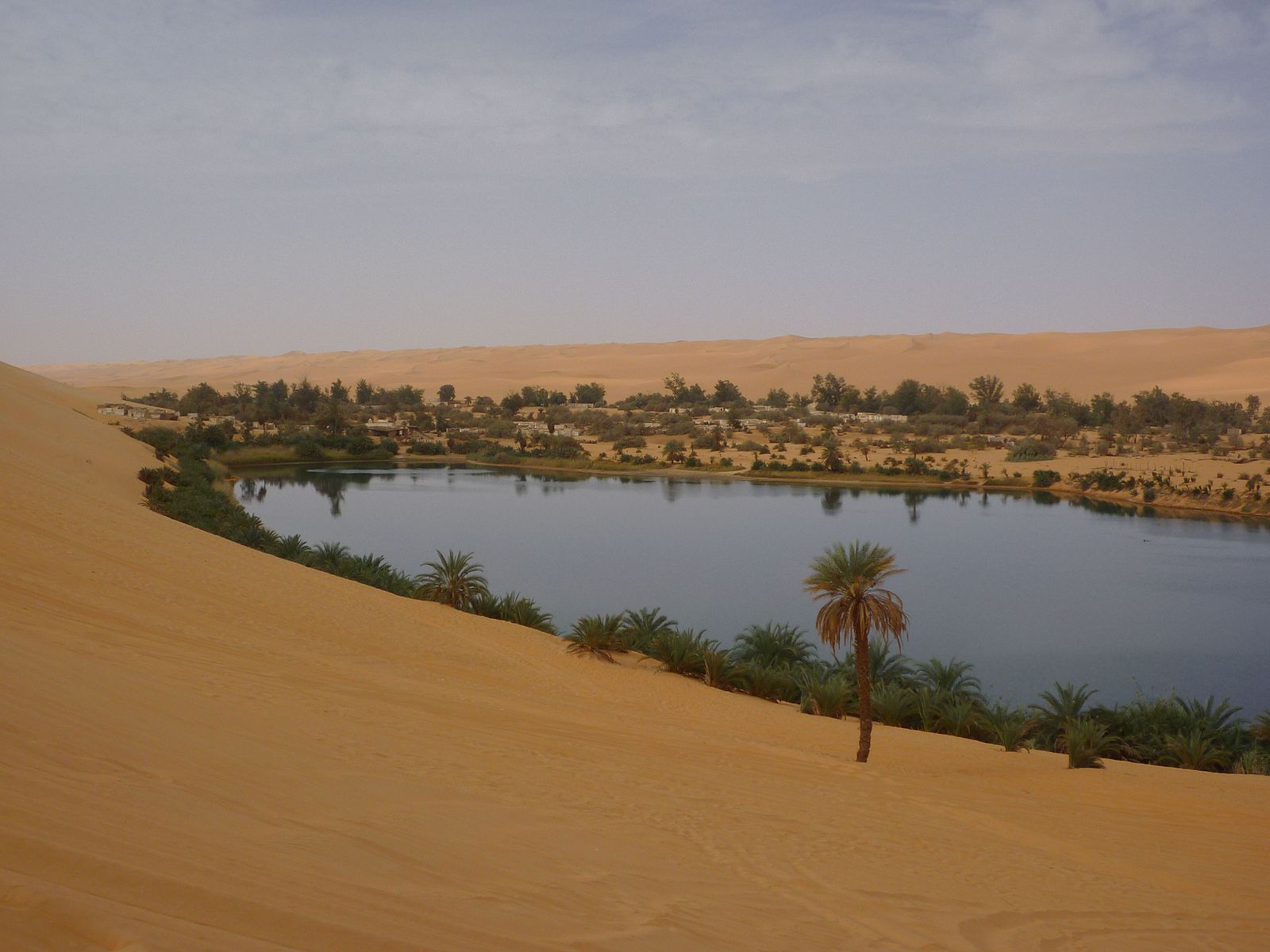What are oases?

Oases are isolated vegetated areas, surrounded by drylands, having a (largely) persistent water supply, of natural or human origin and often with human presence, with a specific microclimate and vegetation structure which facilitates high biocultural diversity.
Oases have been defined as agricultural areas in arid environments where agriculture is normally not possible without irrigation. Oases have endorheic character and water is always considered a requirement, since the areas in which those ecosystems are placed suffer from a higher amount of water loss, what is called evapotranspiration. According to Ramsar Convention, oases are considered a type of inland wetlands but this definition rest importance to the fact that oases are unique geographic entity that appears as well vegetated “islands” within drylands or deserts, intrazonal landscape that exist with deserts in arid and semi-arid regions of the word characterized by having persistent water supply, which differentiate them from “wadis” or other temporal river ecosystems, made fertile by a source of with abundant vegetation and a certain level of isolation. Typically, humans have planted trees like palms around the perimeter to keep the desert sands from their pastures. Oasis are at the same time fertile and fragile ecosystems. Oases can be structured in a multi-layered vegetation composed of wild and crop plants and dominated by a canopy underneath, high biodiversity of animal and plant species occurs within the lower vegetation stratum. Oases create a microclimate that protects themself. The evaporation of oasis water consumes heat energy, producing a reduction of temperature that produces an oasis breeze circulation with hot air from desert going up and cold air from the oasis going down, which produces a wet ring around it which act as vertical wall weakening the low level moisture exchange between the oasis and the desert. This is called oasis effect.
